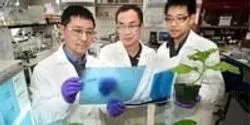biomass

Thermo Fisher Scientific has developed two rapid and robust high-performance anion-exchange chromatography with pulsed amperometric detection (HPAE-PAD) methods for the accurate determination of common sugars in acid-hydrolyzed wood samples.

Eastern Illinois University continued its dedication to clean energy on April 25 by opening its new research facility, Center for Clean Energy Research and Education (CENCERE), dedicated to alternative fuel exploration.

Researchers at the Georgia Institute of Technology and the Joint BioEnergy Institute have engineered a bacterium to synthesize pinene, a hydrocarbon produced by trees that could potentially replace high-energy fuels, such as JP-10, in missiles and other aerospace applications. With improvements in process efficiency, the biofuel could supplement limited supplies of petroleum-based JP-10, and might also facilitate development of a new generation of more powerful engines.

The viability of the bioenergy crops industry could be strengthened by regulatory efforts to address nonpoint source pollution from agricultural sources. That, in turn, means that the industry should be strategic in developing metrics that measure the ability to enact positive changes in agricultural landscapes, particularly through second-generation perennial crops, according to a paper by a University of Illinois expert in bioenergy law.

University of Idaho professor’s project turns cow manure into biodegradable plastic.

Scientists at the University of York are to lead a new Government-backed research project to investigate the potential conversion of waste biomass and waste carbon dioxide into safer and more sustainable raw materials.













